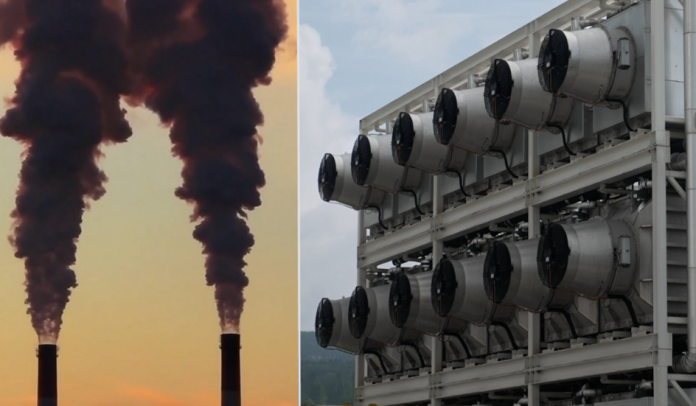On Friday, the United States government announced its intention to invest a maximum of $1.2 billion into the creation of two innovative facilities designed to extract carbon dioxide from the atmosphere. This significant investment represents a bold step towards addressing global warming using an evolving technology. However, this move has garnered criticism from certain experts. The two initiatives, located in Texas and Louisiana, have a shared objective: to remove one million tons of carbon dioxide annually. To put this into perspective, the combined effect would be equivalent to the yearly emissions produced by 445,000 cars powered by gasoline.
According to a statement from the Department of Energy, this marks the most substantial investment ever made globally in engineered carbon removal.
“Cutting back on our carbon emissions alone won’t reverse the growing impacts of climate change. We also need to remove the CO2 that we’ve already put in the atmosphere,” as mentioned in the statement, Energy Secretary Jennifer Granholm expressed.
The approach known as Direct Air Capture (DAC), alternatively referred to as Carbon Dioxide Removal (CDR), directs its efforts towards the CO2 emissions released into the atmosphere, which contribute to both climate change and the occurrence of severe weather events.
According to the Energy Department, these projects are set to eliminate 250 times the amount of CO2 from the air compared to the capacity of the largest operational carbon capture site.
The International Panel on Climate Change (IPCC) under the United Nations views the direct extraction of carbon dioxide from the atmosphere as a crucial method in the fight against global warming.
Nevertheless, this sector remains relatively small: the International Energy Agency reports a mere 27 operational carbon capture sites globally, while around 130 projects are currently in various stages of development.
Concerns have emerged among experts, some of whom fear that the adoption of this technology might serve as a justification for continuing to release greenhouse gases, rather than expediting the transition to cleaner energy sources.
According to Mark Jacobson, a professor at Stanford University, the process of direct capture demands significant electricity for the extraction of CO2 from the air and its subsequent compression into pipelines.
Battelle, a US-based non-profit organization, is at the forefront of the Louisiana initiative. This project involves the underground injection of captured CO2 for storage purposes.
Collaborating alongside Battelle are Heirloom, an American company, and Climeworks, a Swiss company renowned in this sector. Climeworks already operates a facility in Iceland with the capability to annually capture 4,000 tons of CO2 from the atmosphere.
Over in Texas, the endeavor is spearheaded by Occidental, an American company, along with partners including Carbon Engineering. According to Occidental’s statement, there’s potential for this Texas project to be scaled to eliminate as much as 30 million tons of CO2 annually.
According to the energy department, these two initiatives are projected to generate approximately 4,800 employment opportunities. The specific commencement dates for both projects have yet to be finalized.
Funding for these endeavors will stem from President Joe Biden’s extensive infrastructure legislation, which was approved in 2021.
Earlier, the Energy Department disclosed intentions to invest $3.5 billion across four different projects.
Direct capture distinguishes itself from carbon capture and storage (CCS) systems located at emission sources like industrial chimneys. These systems aim to prevent additional emissions from entering the atmosphere.
In May, the Biden administration unveiled a strategy focused on reducing CO2 emissions originating from gas-fired and coal-fired power plants, with a particular emphasis on the latter technique.








